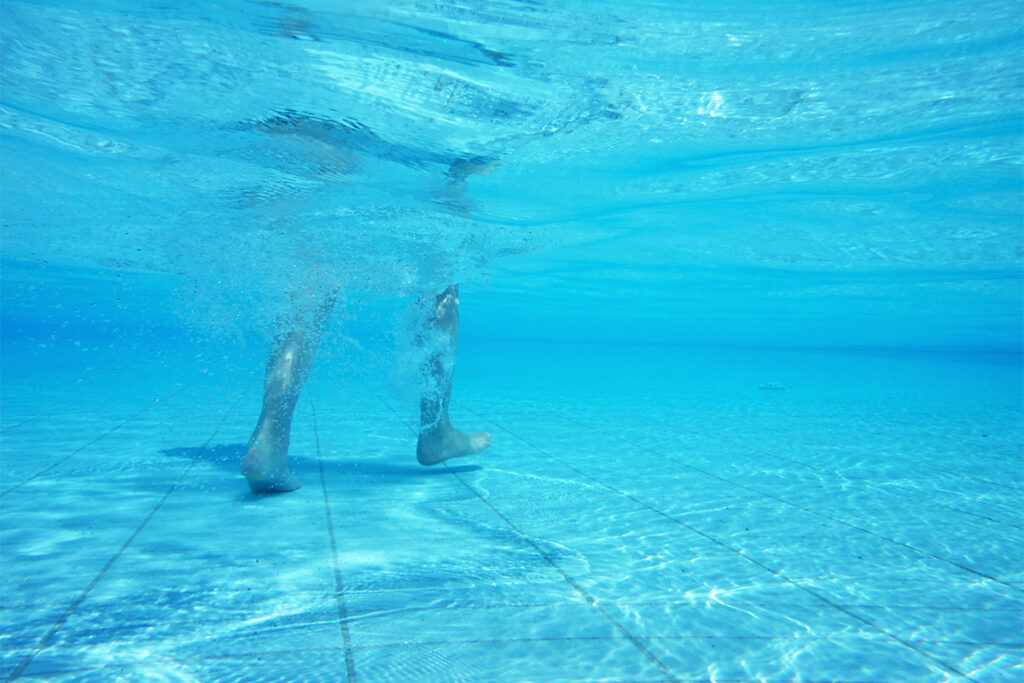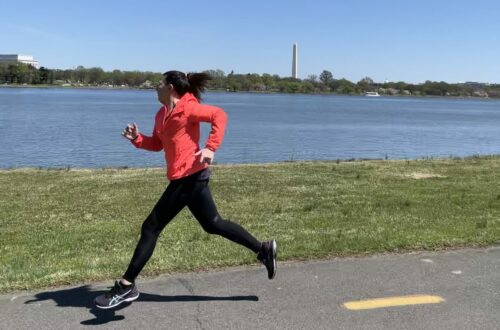6 Aquatic Exercises for an Effective Full Body Workout
Seeking a refreshing departure from your typical fitness regimen? Consider immersing yourself in aquatic exercise. Exercising in water presents an excellent opportunity for a thorough full-body workout, minus the potential strains associated with land-based exercises.
Amidst the scorching summer heat, what could be more invigorating than calorie-burning aquatic workouts? Even in winter’s cold embrace, the warmth of an indoor heated pool offers a cozy haven for maintaining fitness routines.
Between shallow and deep-water exercises, instructors design fun and vigorous choreography to target major muscle groups during a class. If you haven’t tried water exercise, I highly recommend that you do. If you can’t find a class near you but have access to a pool, stay tuned as we dive into these 6 aquatic exercises that will give you a great full-body workout.
The Benefits of Aquatic Exercise
Water exercises make your usual workouts harder because water is thicker than air. This means your muscles work extra hard, and you burn calories faster. Plus, because water makes your heart beat faster, it’s good for your heart too! So, when you do water exercises, you’re boosting your heart health while simultaneously enhancing:
- Muscular Strength and Endurance
- Cardiorespiratory Endurance
- Flexibility, Balance, and Coordination
- Range of Motion and Body Composition
- Sleep, Stress, and Tension
Additionally, water’s buoyancy provides valuable support for muscles and joints, making workouts less taxing on the body compared to exercises done on land. Research indicates that aquatic exercise is advantageous for individuals dealing with joint conditions like osteoarthritis and rheumatoid arthritis. Furthermore, it offers a gentler fitness option for expectant mothers and individuals coping with conditions such as osteoporosis, fibromyalgia, balance issues, or joint injuries.
Equipment is Optional but Helpful
Any water exercise can be done with or without equipment, even in deep water.
Equipment is typically provided for those partaking in aquatic classes at fitness facilities. These may include water treadmills, ellipticals, aquatic bikes, floatation belts, dumbbells or drag equipment. Essential personal gear may include a towel, swim cap, and goggles. However, independent practitioners may wish to procure additional equipment to augment their sessions:
Pool Exercises for a Holistic Workout
1. Aquatic Walking/ Jogging
Start your aquatic journey with a brisk walk in the pool, engaging arms, core, and lower body. If this is your first time, try walking in shallow water. Waist or chest level is recommended for beginners, and above the shoulder level is appropriate for more advanced.
Tips: To do this effectively keep your torso upright, shoulders back, chin up, and walk with a long stride. Press into your heel first before shifting your weight onto your toes. Focus on walking with a proper form where your ears, shoulders, and hips are stacked and in line with one another, keeping a neutral spine alignment. Elevate the challenge by incorporating hand or ankle weights.
Variations: Once you get comfortable and have proper alignment, you can modify each lap gradually increasing the intensity of your walking by adding these variations.
- High knees – engage your core lifting the right knee as high toward your chest as you can. At the same time, raise your left arm and switch. Arms always move in opposition of the legs.
In addition to toning the legs, this exercise targets the core muscles, the glutes, and hip flexors.
- Lunges – Perform at waist-level water depth, step forward with your right foot, and lower the front thigh parallel to the pool floor. Keep the front knee in line with your ankle and the back leg straight. Switch legs as you move forward, and keep your arms extended to the side for balance. This variation will strengthen your quads, hamstrings, calves, and glutes.
- Side Lunges or Walking Sideways – targeting your inner and other thigh muscles and the adductors. Stand sideways with your right hip leading and step your right foot to the side. Bring the left foot to meet your right and continue walking sideways to the right until you reach the end, then lead with your left hip in the opposite direction. Side lunges follow the same rules as forward lunges except you step to the side instead of forward.

2. Forward Arm Lifts
Strengthen arm muscles by executing controlled lifts with foam dumbbells submerged at shoulder level. Keep a micro-bend at the elbow and don’t let the buoyancy float your arms up to the surface. Control the movement and perform 12-16 reps slowly 3-4 times.
Tips: Keep your shoulders aligned with your hips for a neutral spine and proper form. Try one set with your palms facing up, and the next set with your palms facing down.
Variations: For a challenging bicep curl keep the elbows as close as possible to your torso and move just the forearm down toward your hip. Palms facing up or down, bring the dumbbells up toward the surface until you reach a 90-degree angle without moving the elbows.
3. Lateral Arm Lifts
Further sculpt upper body muscles with lateral arm lifts, emphasizing controlled movements with foam dumbbells or without for beginners. The main muscle working here is the deltoid, so this exercise requires precision and care for anyone recovering their shoulder. Perform 8-12 reps and 3 to 4 sets depending on your personal preference and fitness level.
Tips: Be mindful of the weight, squeeze the glutes to help with upper body stability, and keep your palm facing down so your thumbs are pointing in the same direction as your belly button.
Variations: Alternate the arms if lifting both is troublesome for your shoulders. Be gentle with your shoulders with an ample amount of rest between sets. You can start without weights and if it seems easy to do 12 repetitions (arms lifting together) then try with dumbbells.
4. Pendulum Legs
Activate core and lower body muscles by kicking each leg to the side, and hopping from one foot to the other. Arms moving in opposition to the legs, working the gluteus medius and minimus. Repeat 3-5 sets of 15-20 reps on each side.
Tips: Make sure that once you kick your leg to the side, you return it to the center and hop onto the other leg ready to kick to the side. Keep your core engaged as the power phase is in the kick providing force to that outer thigh muscle.
Variations: Alternating legs – kick your right leg to the side for a count of 15-20 reps, then switch and repeat on the left side for 15-20 reps.
5. Aquatic Jumping Jacks
Amplify cardiovascular engagement with aquatic jumping jacks, integrating wrist and ankle weights for added resistance is optional. Repeat 3-4 sets of 12-18 reps each.
Tips: In chest-deep water with your feet together and arms at your sides, jump while pushing the legs out to the sides, until they are shoulder-width apart, then jump again, bringing the legs back together. At the same time extend the arms out to the side at shoulder level and as your feet come together, the palms of the extended arms meet at the center of your chest.
Variations: Squat jumps are another plyometric exercise that targets the hips, legs, and glutes. In waist-deep water with feet shoulder-width apart, bend your knees into a full squat until your shoulders are submerged. Bend the elbows holding your hands toward each other at the center of your chest. Engage your core as you jump up, pushing your arms down toward the bottom of the pool.
6. Leg Shoots
Dynamically target core, lower back, and leg muscles by executing fluid leg shoots, maintaining buoyancy throughout. Raise each leg straight up in front while keeping a micro-bend in the knee. Repeat 12-16 times on each side, alternating legs for 3 to 4 sets.
Tips: Spine alignment is very important here, so keep your shoulders stacked over your hips. You can stand with your back against the pool wall for support and balance.
Variations: As you engage your core lift your right leg while reaching the opposite (left) arm out in front as if you are trying to reach your left fingers to your right toes. It’s ok if your arm only reaches to your knee, as long as you’re not leaning forward.
Safety Precautions
- Stay adequately hydrated before and after workouts.
- Employ flotation devices if swimming proficiency is limited.
- Avoid excessively heated pool environments exceeding 90°F (32°C).
- Cease exercise if experiencing dizziness, breathlessness, nausea, weakness, chest discomfort, or undue pressure.
Water workouts provide a versatile method for enhancing cardiovascular fitness and strengthening key muscle groups. Especially advantageous for those with joint issues, injuries, or pregnancy-related considerations, aquatic exercises offer a gentle yet effective alternative to traditional fitness regimens.
Prior to starting any new exercise program or if you have underlying health concerns, it’s recommended to consult with a healthcare professional for personalized guidance and support. Always stretch before and after a workout





